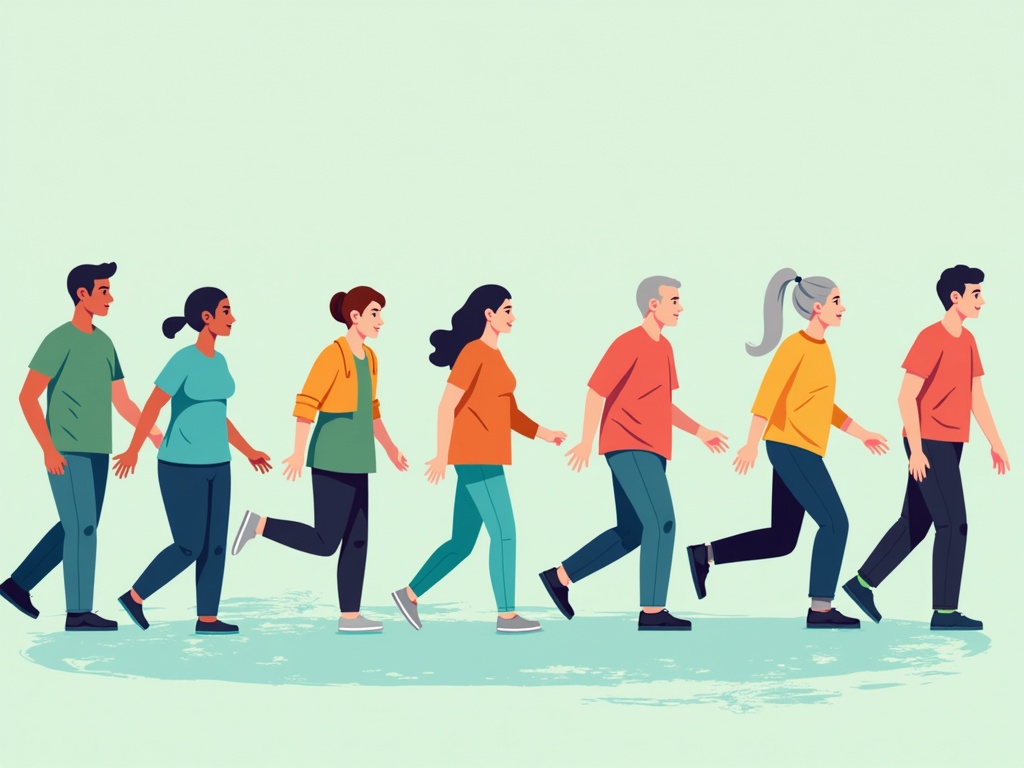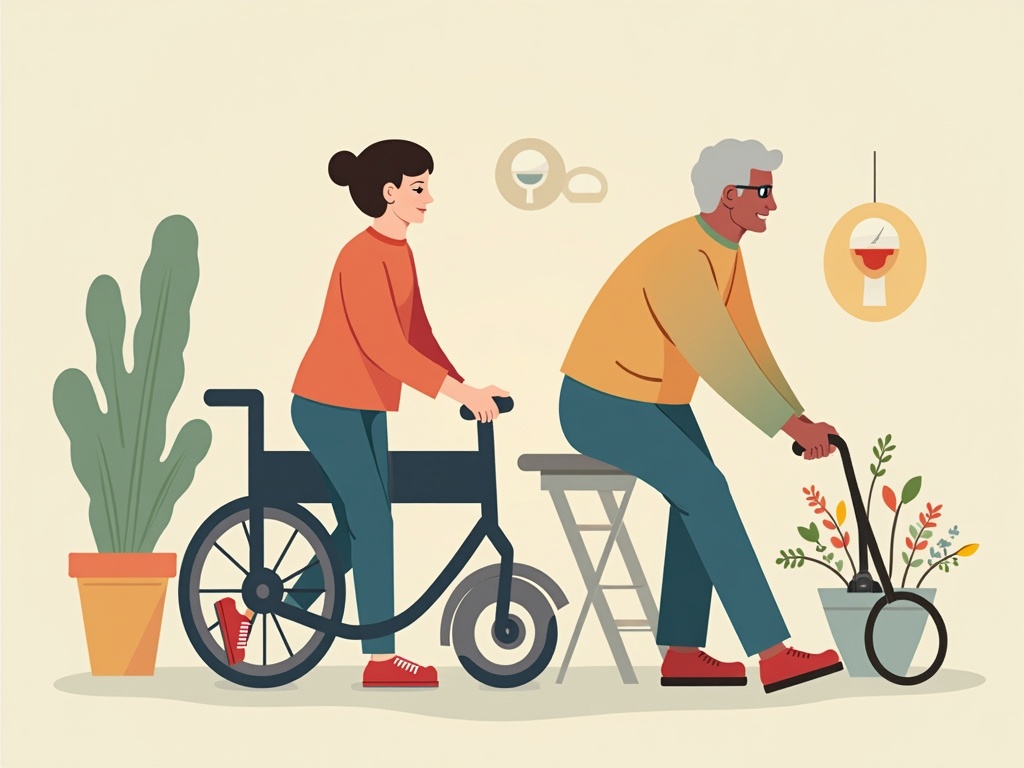Preventing Mobility Loss as You Age: A Comprehensive Guide
Imagine yourself effortlessly rising from a chair, dancing with joyful abandon at a family wedding, or hiking a scenic trail well into your golden years. This vibrant picture of active aging isn't just a fantasy; it's an achievable goal. However, maintaining mobility as you age requires proactive effort. Our bodies naturally change over time, but with the right strategies, you can significantly slow down mobility loss and keep enjoying the activities you love.
Understanding Mobility Loss: What Happens as We Age?
Mobility encompasses your ability to move freely and easily. It involves a complex interplay of your musculoskeletal system (bones, muscles, joints), nervous system, and cardiovascular system. As we age, several factors can contribute to a decline in mobility:
- Muscle Loss (Sarcopenia): Starting in our 30s, we gradually lose muscle mass and strength. This can make it harder to perform everyday tasks like lifting groceries or climbing stairs.
- Joint Stiffness and Pain: Conditions like osteoarthritis become more common with age, leading to inflammation, pain, and reduced range of motion in joints.
- Bone Density Loss (Osteoporosis): Bones become weaker and more brittle, increasing the risk of fractures, especially in the hip, spine, and wrist.
- Nerve Damage (Neuropathy): Conditions like diabetes can damage nerves, leading to numbness, tingling, and weakness in the extremities, affecting balance and coordination.
- Cardiovascular Issues: Reduced cardiovascular fitness can limit stamina and energy levels, making physical activity more challenging.
- Balance Problems: Changes in vision, inner ear function, and proprioception (awareness of body position) can affect balance and increase the risk of falls.
The Power of Prevention: Taking Control of Your Mobility
While some age-related changes are inevitable, you have considerable power to influence your mobility trajectory. A proactive approach focusing on exercise, nutrition, and lifestyle modifications can make a world of difference.
1. Embrace Regular Exercise: The Cornerstone of Mobility
Exercise is arguably the most crucial factor in preventing mobility loss. It's not just about hitting the gym; it's about incorporating movement into your daily life. A well-rounded exercise program should include:
- Strength Training: Lift weights, use resistance bands, or do bodyweight exercises like squats and push-ups to build and maintain muscle mass. Aim for at least two sessions per week, targeting all major muscle groups. Think about the impact of stronger legs making it easier to rise from a chair.
- Cardiovascular Exercise: Engage in activities that elevate your heart rate and improve endurance, such as walking, swimming, cycling, or dancing. Aim for at least 150 minutes of moderate-intensity or 75 minutes of vigorous-intensity aerobic activity per week.
- Flexibility and Stretching: Improve range of motion and reduce stiffness by stretching regularly. Yoga, Pilates, and Tai Chi are excellent options. Even simple stretches held for 30 seconds each day can improve flexibility.
- Balance Training: Practice exercises that challenge your balance, such as standing on one leg, walking heel-to-toe, or using a balance board. This can help prevent falls and improve stability.
2. Nourish Your Body: The Role of Diet and Nutrition
A healthy diet provides the building blocks for strong muscles, bones, and joints. Focus on these key nutrients:
- Protein: Essential for muscle growth and repair. Aim for at least 0.8 grams of protein per kilogram of body weight per day. Good sources include lean meats, poultry, fish, eggs, beans, lentils, and tofu.
- Calcium and Vitamin D: Crucial for bone health. Dairy products, leafy green vegetables, and fortified foods are good sources of calcium. Vitamin D is obtained from sunlight and fortified foods, or through supplementation.
- Omega-3 Fatty Acids: These healthy fats can help reduce inflammation and joint pain. Find them in fatty fish (salmon, tuna, mackerel), flaxseeds, chia seeds, and walnuts.
- Antioxidants: Protect cells from damage caused by free radicals. Eat a variety of colorful fruits and vegetables rich in vitamins and minerals.
Staying hydrated is also crucial for joint lubrication and overall health. Drink plenty of water throughout the day.
3. Lifestyle Adjustments: Small Changes, Big Impact
Beyond exercise and nutrition, several lifestyle modifications can contribute to maintaining mobility:
- Maintain a Healthy Weight: Excess weight puts extra stress on joints, increasing the risk of osteoarthritis and mobility limitations.
- Quit Smoking: Smoking impairs blood flow and bone health, accelerating age-related decline.
- Manage Stress: Chronic stress can contribute to muscle tension and pain. Practice relaxation techniques like meditation, deep breathing, or yoga.
- Get Enough Sleep: Sleep is essential for muscle recovery and overall health. Aim for 7-8 hours of quality sleep per night.
- Regular Medical Checkups: Discuss any concerns about mobility with your doctor and get regular screenings for conditions like osteoporosis and arthritis.
4. Assistive Devices and Home Modifications
As you age, assistive devices and home modifications can play a crucial role in maintaining independence and preventing falls. These may include:
- Canes and Walkers: Provide stability and reduce strain on joints.
- Grab Bars: Installed in bathrooms and showers to prevent falls.
- Raised Toilet Seats: Make it easier to sit and stand.
- Ramps: Provide access for wheelchairs and walkers.
- Good Lighting: Improves visibility and reduces the risk of trips and falls .
Specific Exercises for Maintaining Mobility
Here are some specific exercises you can incorporate into your routine to target key areas for mobility:
Lower Body Strength
- Squats: Strengthen legs and glutes. Start with bodyweight squats and gradually add weight as you get stronger.
- Lunges: Improve balance and strengthen legs and core.
- Calf Raises: Strengthen calf muscles for better ankle stability.
- Glute Bridges: Strengthen glutes and hamstrings.
Upper Body Strength
- Push-ups: Strengthen chest, shoulders, and triceps. Start with modified push-ups against a wall or on your knees.
- Rows: Strengthen back muscles for better posture. Use dumbbells, resistance bands, or a rowing machine.
- Overhead Press: Strengthen shoulder muscles. Use dumbbells or resistance bands.
- Bicep Curls: Strengthen biceps muscles. Use dumbbells or resistance bands.
Flexibility and Balance
- Hamstring Stretches: Improve flexibility in the back of your legs.
- Quad Stretches: Improve flexibility in the front of your thighs.
- Hip Flexor Stretches: Improve flexibility in your hips.
- Balance Exercises: Stand on one leg, walk heel-to-toe, or use a balance board.
- Yoga or Tai Chi: Improve flexibility, balance, and coordination.
Listening to Your Body: Avoiding Overexertion and Injury
It's important to listen to your body and avoid pushing yourself too hard, especially when starting a new exercise program. Start slowly and gradually increase the intensity and duration of your workouts. If you experience any pain, stop and rest. Consult your doctor or a physical therapist if you have any concerns.
The Mental Game: Staying Positive and Motivated
Maintaining mobility as you age is not just about physical health; it's also about mental well-being. A positive attitude and a strong sense of purpose can go a long way in keeping you motivated and engaged in life.
- Set Realistic Goals: Don't expect to become an Olympic athlete overnight. Set achievable goals and celebrate your progress along the way.
- Find Activities You Enjoy: Choose activities that you find fun and engaging, whether it's dancing, gardening, hiking, or swimming.
- Socialize and Stay Connected: Social interaction can boost your mood and motivation. Join a walking group, take a fitness class, or volunteer in your community.
- Focus on the Benefits: Remind yourself of the many benefits of staying active, such as improved energy levels, reduced pain, and increased independence.
Embrace the Journey: A Lifelong Commitment to Mobility
Preventing mobility loss as you age is a lifelong journey, not a destination. It requires ongoing effort and commitment, but the rewards are well worth it. By embracing regular exercise, nourishing your body, and making smart lifestyle choices, you can maintain your mobility, independence, and quality of life for years to come. So, take that first step today and start moving toward a healthier, more active future. Don't wait until mobility loss becomes a problem; start preventing it now and enjoy the freedom to live life to the fullest, at any age.


